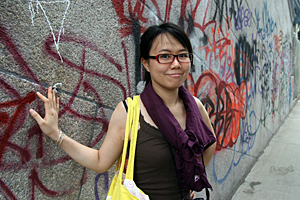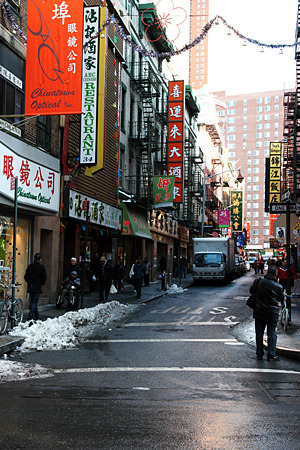ADVERTISEMENT
- Rozovsky wins prestigious NSF Early Career Award
- UD students meet alumni, experience 'closing bell' at NYSE
- Newark Police seek assistance in identifying suspects in robbery
- Rivlin says bipartisan budget action, stronger budget rules key to reversing debt
- Stink bugs shouldn't pose problem until late summer
- Gao to honor Placido Domingo in Washington performance
- Adopt-A-Highway project keeps Lewes road clean
- WVUD's Radiothon fundraiser runs April 1-10
- W.D. Snodgrass Symposium to honor Pulitzer winner
- New guide helps cancer patients manage symptoms
- UD in the News, March 25, 2011
- For the Record, March 25, 2011
- Public opinion expert discusses world views of U.S. in Global Agenda series
- Congressional delegation, dean laud Center for Community Research and Service program
- Center for Political Communication sets symposium on politics, entertainment
- Students work to raise funds, awareness of domestic violence
- Equestrian team wins regional championship in Western riding
- Markell, Harker stress importance of agriculture to Delaware's economy
- Carol A. Ammon MBA Case Competition winners announced
- Prof presents blood-clotting studies at Gordon Research Conference
- Sexual Assault Awareness Month events, programs announced
- Stay connected with Sea Grant, CEOE e-newsletter
- A message to UD regarding the tragedy in Japan
- More News >>
- March 31-May 14: REP stages Neil Simon's 'The Good Doctor'
- April 2: Newark plans annual 'wine and dine'
- April 5: Expert perspective on U.S. health care
- April 5: Comedian Ace Guillen to visit Scrounge
- April 6, May 4: School of Nursing sponsors research lecture series
- April 6-May 4: Confucius Institute presents Chinese Film Series on Wednesdays
- April 6: IPCC's Pachauri to discuss sustainable development in DENIN Dialogue Series
- April 7: 'WVUDstock' radiothon concert announced
- April 8: English Language Institute presents 'Arts in Translation'
- April 9: Green and Healthy Living Expo planned at The Bob
- April 9: Center for Political Communication to host Onion editor
- April 10: Alumni Easter Egg-stravaganza planned
- April 11: CDS session to focus on visual assistive technologies
- April 12: T.J. Stiles to speak at UDLA annual dinner
- April 15, 16: Annual UD push lawnmower tune-up scheduled
- April 15, 16: Master Players series presents iMusic 4, China Magpie
- April 15, 16: Delaware Symphony, UD chorus to perform Mahler work
- April 18: Former NFL Coach Bill Cowher featured in UD Speaks
- April 21-24: Sesame Street Live brings Elmo and friends to The Bob
- April 30: Save the date for Ag Day 2011 at UD
- April 30: Symposium to consider 'Frontiers at the Chemistry-Biology Interface'
- April 30-May 1: Relay for Life set at Delaware Field House
- May 4: Delaware Membrane Protein Symposium announced
- May 5: Northwestern University's Leon Keer to deliver Kerr lecture
- May 7: Women's volleyball team to host second annual Spring Fling
- Through May 3: SPPA announces speakers for 10th annual lecture series
- Through May 4: Global Agenda sees U.S. through others' eyes; World Bank president to speak
- Through May 4: 'Research on Race, Ethnicity, Culture' topic of series
- Through May 9: Black American Studies announces lecture series
- Through May 11: 'Challenges in Jewish Culture' lecture series announced
- Through May 11: Area Studies research featured in speaker series
- Through June 5: 'Andy Warhol: Behind the Camera' on view in Old College Gallery
- Through July 15: 'Bodyscapes' on view at Mechanical Hall Gallery
- More What's Happening >>
- UD calendar >>
- Middle States evaluation team on campus April 5
- Phipps named HR Liaison of the Quarter
- Senior wins iPad for participating in assessment study
- April 19: Procurement Services schedules information sessions
- UD Bookstore announces spring break hours
- HealthyU Wellness Program encourages employees to 'Step into Spring'
- April 8-29: Faculty roundtable series considers student engagement
- GRE is changing; learn more at April 15 info session
- April 30: UD Evening with Blue Rocks set for employees
- Morris Library to be open 24/7 during final exams
- More Campus FYI >>
9:57 a.m., April 21, 2010----Imagine attending graduate school at a Chinese university where your thesis research is about an enclave of American expatriates in the middle of Beijing or Shanghai known as “Americatown.”
That is essentially what Ying Xu, a graduate student at the University of Delaware's Center for Historic Architecture and Design, is doing as she conducts research for her master's thesis on the development and functioning of Chinatowns in the United States, with a special focus on New York City's Chinatown.
Xu says the purpose of her research is to determine what influenced the establishment of Chinatowns across the United States, to examine their intangible aspects -- including the lives and experiences of Chinese immigrants -- and to look at the landscape and buildings that were significant in Chinatown's history.
She said she was intrigued by the Chinatown scene when she first arrived in New York City from China in August 2008.
“In my imagination, Chinatown was a place where Chinese people lead affluent and mysterious lives, a place that looks like everyday American urban life,” says Xu, who is originally from China's Canton province. “What shocked me was the seemingly irreconcilable paradox of Chinese traditionalism and American modernism: an old town against lower Manhattan's skyscrapers. Although Chinatown is not exactly a real reflection of a city or town of today's China, it does represent the Chinese cultural atmosphere.”
To conduct her research, Xu took advantage of the combination of her native language, Cantonese, her fluency in Mandarin, and family and kin connections to people in the area. She used published books and articles, census data and historic photographs as sources to gather information about how Chinatown developed into what it is now and what its future might hold. She also interviewed professionals in Chinatown and took over 200 photographs.
Xu's research shows how New York's Chinatown emerged through structural, legal and cultural barriers, thanks to Chinese immigrants who sought economic and social refinement. As a result, they differentiated from their European counterparts and established Chinatown -- their own economic enclave -- and built their own schools, churches, clubs, media and shops.
“The century-old Chinatown evokes images of a middle town in China of around 50 years ago,” Xu says. “A busy and crowded neighborhood surrounded by historic buildings; signs for shops and roads written in Chinese; narrow sideways that are crowded with vegetable stands; the air is filled with smells of dim sum; residents and tourists jam the busy narrow streets.”
There are many Chinese customs visible in Chinatown, Xu says, and as a result, cultural traditions are preserved and passed along to future generations. Immigrants in Chinatown are able to conduct their lives in their native language and follow their own customs and rituals. Xu says that 85 percent of the Chinese population in New York, which is growing at a high rate, resides in Chinatown.
Xu says Chinatown has adapted to American culture in some ways, including the food, adding that about half of the food that is offered in Chinatown is authentic Chinese cuisine from various regions of the country.
“Each cuisine has its own dishes,” she says. “For example, chow mein (fried noodles) and chow fun (fried rice noodles) are typical everyday Cantonese dishes, and xang su ya (crispy skin duck) and marpoo dofu (spicy pork with aromatic bean curd) are typical Szechuan dishes carried over from China.”
Some offerings, however, are “Americanized” versions of Chinese food intended to fit in with the general population, she says, including kung pao chicken, beef with broccoli and wonton soup.
One in five Chinese immigrants chooses to live in a Chinatown when they come to the United States, Xu says. New York City's Chinatown is still expanding and becoming an important part of Manhattan, as the ethnic community provides many job opportunities and comparatively low rent for housing.
Xu's research is being supervised by Chandra Reedy, professor in the School of Urban Affairs and Public Policy, with joint appointments in art history, material culture and East Asian studies.
"Supervising this thesis was a unique opportunity to see the story of New York's Chinatown through the eyes of a modern Chinese citizen," Reedy says. "Her ability to connect the history of Chinatown with the history of both China and the U.S., to draw on scholarship published in China as well as in the U.S., and to talk to and gain rapport with Chinatown residents led her to some unique and perceptive insights about this place that American students might not have developed."
Article by Jon Bleiweis





